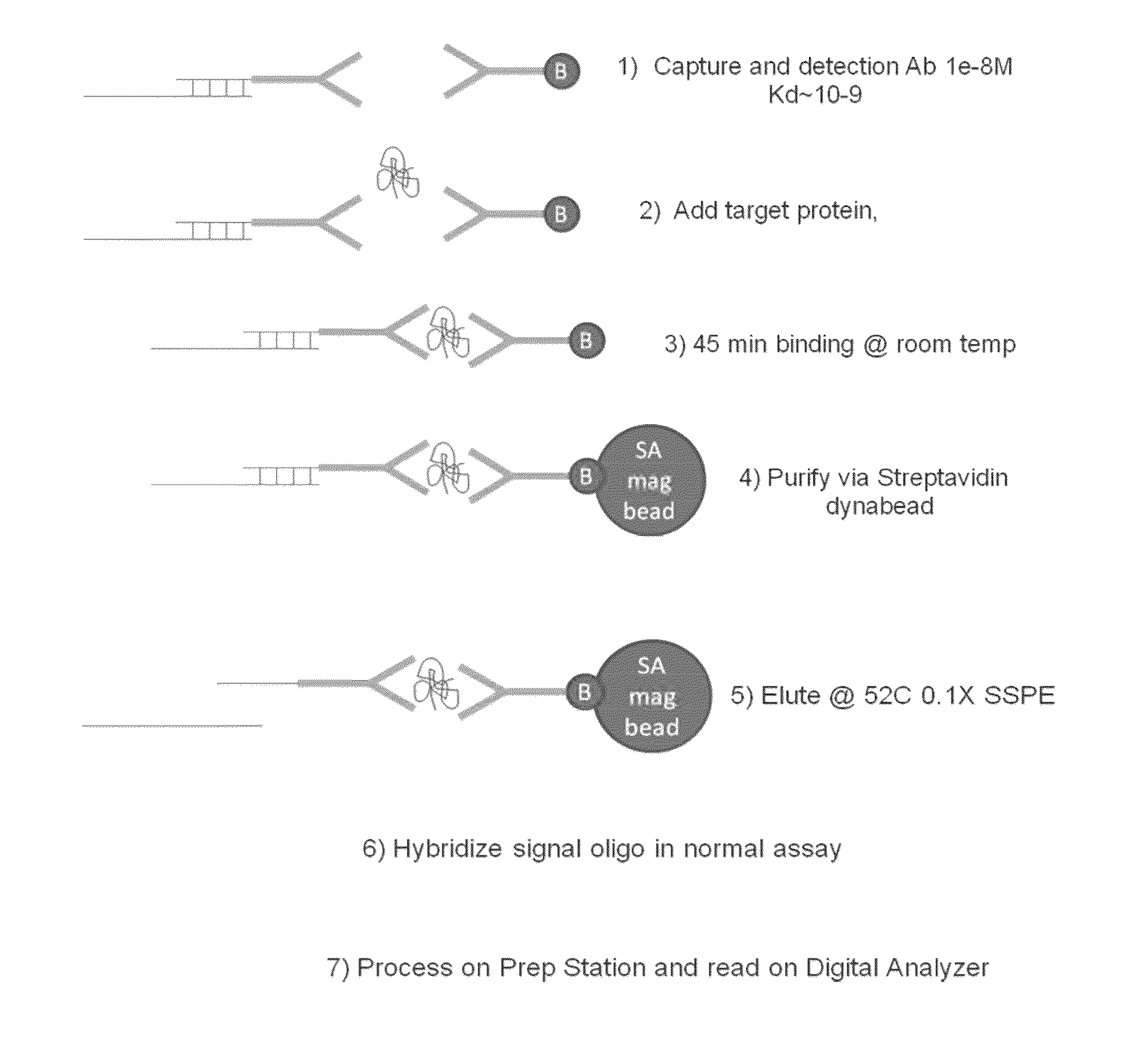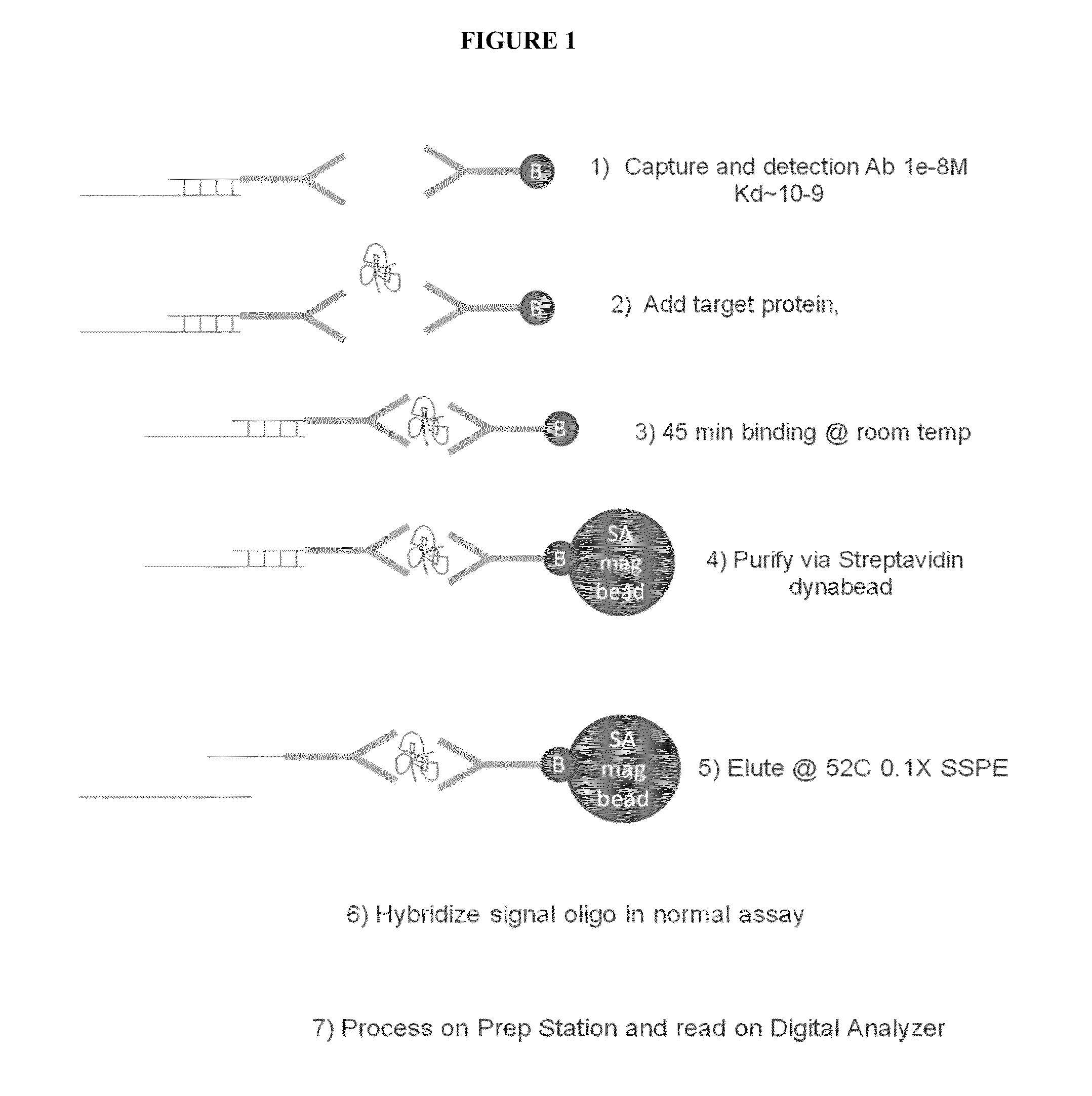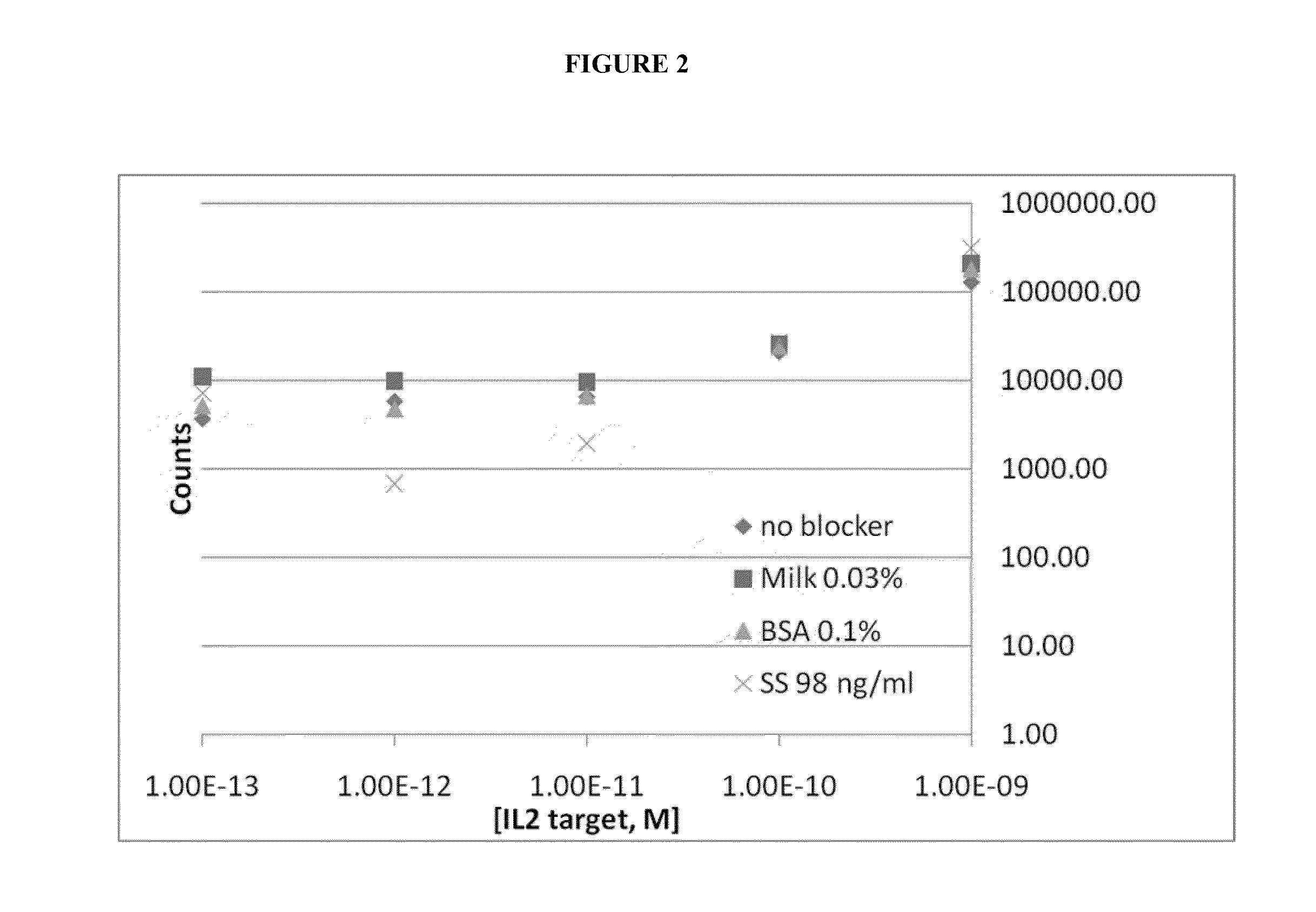Protein Detection Via Nanoreporters
a technology of nano-reporters and proteins, applied in the field of protein detection, can solve the problems of limited methods of multiplexed protein measurement technologies and difficulty in protein measurement in biological fluids
- Summary
- Abstract
- Description
- Claims
- Application Information
AI Technical Summary
Problems solved by technology
Method used
Image
Examples
example 1
Detection of Proteins Using Indirect Measurements—Sandwich Assay in Solution
[0160]A diagram of the protocol for this Example is depicted in FIG. 1. In this Example the assay is set up to separate the binding of the protein target from the hybridization of the reporters to eliminate issues with the mismatch between low binding affinity of protein probes and the working concentration of reporters.
Label of Detection Antibody with Oligo and Purification
[0161]The linker oligos were attached to the antibody by random amine attachment using a 10 to 1 ratio of linker oligos to antibodies. Briefly, bifunctional crosslinker Sulfosuccinimidyl 4-[p-maleimidophenyl]butyrate (SMPB) (ThermoFisher, Inc., Waltham, Mass.) was coupled to anti-IL2 antibody A then reacted to thiolated oligo to crosslinker at an antibody:oligo ratio of 1:3 at room temperature. The antibody A linked to SMPB was purified by running the mixture thru Zeba column 2X, 1000G, (ThermoFisher, Inc., Waltham, Mass.) and the yield i...
example 2
Detection of Proteins Using Direct Measurement—Solution Triparitide—Protein Probe Attached to Reporter
[0174]A diagram of the protocol for this Example is depicted in FIG. 4. In this Example the nanoreporter is attached to one of the antibodies. Preparation of the antibodies and binding to the sample happens similar to the protocol described in Example 1. In the assay described in
[0175]FIG. 4 a complex of target protein and antibodies is formed in which one of the antibodies is bound to biotin and the other antibody has a nanoreporter attached.
[0176]This approach would work best with medium to low Kd antibodies, i.e., strong binding affinity. Without intending to be limited to any theory, The Kd (dissociation constant) of an antibody is usually much higher than the working concentrations of nanoreporters. In order to work with antibodies attached to nanoreporters the Kd needs to be ten times lower than the working concentration of the reporters to insure >90% binding of target to pro...
example 3
of Proteins Using Indirect Measurement—Sandwich Assay on a Surface
[0185]A diagram of the protocol for this Example is depicted in FIG. 6. In this Example the capture antibody is attached to a surface, e.g. a magnetic bead, and the second antibody is attached to a signal oligo. The antibodies can be prepared by any methods knows in the art including the methods described in Example 1. In this example, proteins and nanoreporters are largely separate, which eliminates concerns about protein stickiness. In this assay the local antibody concentrations on the surface can be high.
[0186]The target proteins are mixed with the capture antibody on the magnetic beads (2 hours to overnight, 1× PBS, and room temperature). The unbound protein sample is washed away. The labeled antibody signal oligo complex is added to the beads with blockers (1× PBS and room temperature). After a period of binding the excess labeled antibody signal oligo complex is washed away. The isolated target protein / antibody...
PUM
| Property | Measurement | Unit |
|---|---|---|
| temperature | aaaaa | aaaaa |
| temperature | aaaaa | aaaaa |
| temperature | aaaaa | aaaaa |
Abstract
Description
Claims
Application Information
 Login to View More
Login to View More - R&D
- Intellectual Property
- Life Sciences
- Materials
- Tech Scout
- Unparalleled Data Quality
- Higher Quality Content
- 60% Fewer Hallucinations
Browse by: Latest US Patents, China's latest patents, Technical Efficacy Thesaurus, Application Domain, Technology Topic, Popular Technical Reports.
© 2025 PatSnap. All rights reserved.Legal|Privacy policy|Modern Slavery Act Transparency Statement|Sitemap|About US| Contact US: help@patsnap.com



